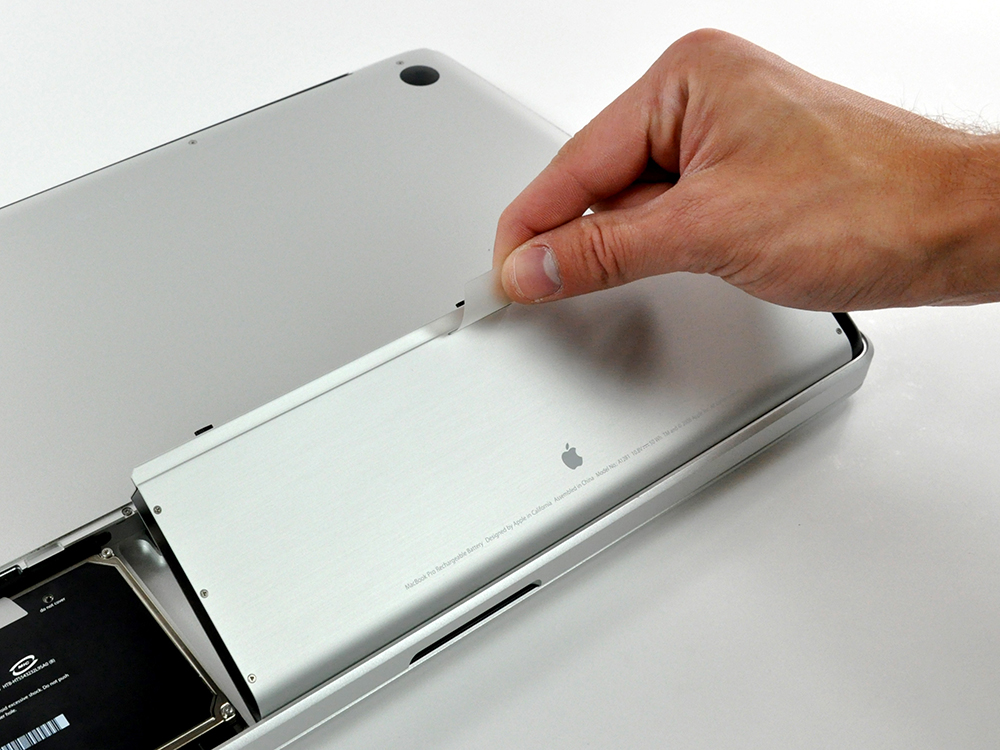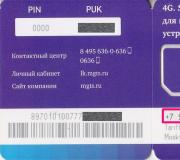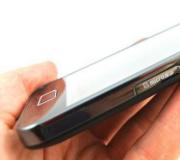Resetting your MacBook to factory settings: options and instructions. Factory reset Macbook: options and instructions Macbook pro 13 reset power controller
Apple technology is famous for its trouble-free operation, but even with it, problems sometimes arise. Mac computers are no exception. Users sometimes face various failures, such as turning off the backlight or incorrect operation of indicators. One of the solutions is to reset the SMC and PRAM parameters, which will be discussed in this material.
SMC is the system management controller for Mac computers with Intel processors. In fact, this is a chip responsible for the operation of many physical elements: indicators, coolers, keyboards, and power buttons. It also monitors the operation of power supplies and affects the behavior of the computer in sleep mode. PRAM is a phase change memory that stores information about date, time, peripheral settings, volume, and the desktop as a whole. The settings are permanently stored in memory due to the dedicated power supply, so even after restarting the computer, the data is not wiped.
It would seem that the components are responsible for such little things, but it will not work fully without them. Therefore, Apple engineers provided a tool to reset SMC and PRAM parameters to factory defaults. There are many reasons why this procedure should be done now - if the SMC is not working correctly, then problems of this nature may arise:
- MacBook won't turn on immediately after opening the lid
- The power status indicator does not correctly display its status
- Trackpad stopped working
- Mac takes a long time to shut down
- Keyboard backlight not working or working incorrectly
If there are problems with PRAM, then the following problems may appear:
- Volume controls are not working properly
- Screen resolution is constantly resetting
- Keyboard not responding or responding incorrectly
- Time zone settings are reset
How to reset the SMC parameter
Before proceeding, be sure to close all applications, restart your computer, and check if the problem is present. If the problem persists, follow the instructions. But remember that the instructions are different for different Mac models, so you need to determine the type of computer first.
What to do if you have a MacBook with a removable battery:

- Shut down the computer and turn off the power
- Remove the battery
- Press and hold the power button for 5 seconds
- Replace the battery
- Connect the power adapter
- Turn on Mac
What to do if you have a MacBook with a non-removable battery:

- Turn off the computer and reconnect the power
- Press the Shift, Control and Option keys on the left side and the power button at the same time
- Release all keys at the same time
- Turn on Mac
How to reset PRAM parameters
- Shut down your Mac
- Press the power button and immediately after that, hold down Command + Option + P + R
- Hold the keys until the Mac starts playing the startup sound again
After restarting your Mac, it will reset the time, date, and connected controllers, so you'll have to set it up all over again. If, after these steps, you still could not fix the problem, then contact the UiPservice engineers. They will answer all questions regarding and solve the problem.
Hello, friends. Sometimes your Mac can start to behave strangely for some unknown reason. The indicator lights will not work correctly, the volume settings will no longer be saved, the screen resolution will change, and there will be problems with various applications. Most often, all this can be solved by closing all applications and restarting the computer. But sometimes, you have to resort to resetting SMC and PRAM parameters.
The System Management Controller (SMC) is a chip embedded in Mac computers powered by Intel processors. It is responsible for the functioning of many physical elements of the computer, for example, LED indicators, keyboards and other peripherals, fans, and power buttons. It also affects the hard drive, hibernation behavior, and power supplies.
Phase Change Memory (PRAM) stores information about your computer's configuration, including parameters such as date and time, as well as desktop, volume, mouse settings, and so on. This memory runs on a small battery, so settings are not lost every time the computer is turned off.
Most of the time, when there is a problem that requires you to reset the SMC or PRAM, your Mac will just behave strangely. Most likely, it will continue to work and run the applications you want, but some functions may fail. For example, if SMC is not working correctly, you may experience the following problems:
- Battery or status lights behave strangely
- Keyboard backlight not working or working incorrectly
- Your MacBook won't turn on right after opening
- The power adapter status light reflects its status incorrectly
- The fan is spinning too fast, especially when the system load is low
- Trackpad not working
- Computer won't connect to Wi-Fi
- Your computer won't turn on
- Target display turns on and off unexpectedly
- Application icons bounce for a long time when they are launched
- The computer runs very slowly, even with low CPU usage
- Your computer takes a long time to shut down
If the problem is with PRAM, the following problems may occur:
- Volume controls are not working properly
- No boot sector specified (you will see a corresponding message when the computer boots)
- Strange speed of movement and mouse clicks
- Keyboard responds abnormally to keystrokes
- Time zone and time settings are reset or not changed at all
- Screen resolution resets or does not change at all
- AirPort Problems
- Computer takes a long time to shut down
Resetting SMC and PRAM parameters- the first step towards solving many problems. Therefore, if your computer is behaving a little oddly, and restarting does not correct the situation, you should consider performing a reset.
Reset SMC
Before resetting SMC or PRAM settings, it is best to close all applications and restart your computer to see if the problem has gone away. Also, you should remember that booting your computer after a reset may take longer than usual. Apps can start slower too, but things should be back to normal soon.
The procedure for resetting the SMC parameters depends on your computer type.
MacBook with removable battery
- Turn off your computer.
- Unplug the power adapter.
- Remove the battery.
- Press and hold the power button for five seconds.
- Replace the battery.
- Plug in the power adapter.
- Turn on your computer.
- Turn off your computer.
- Plug in the power adapter.
- On the built-in keyboard, press the keys at the same time Shift, Control and Option on the left side and the power button.
- Release all three buttons at the same time.
- Turn on your computer.
Mac Pro, iMacon baseIntel, Mac minion baseIntelandXserveon baseIntel
- Turn off your computer.
- Unplug the power adapter.
- Wait fifteen seconds.
- Plug in the power adapter.
- Turn on your computer.
After resetting the SMC, the LEDs on the MagSafe power adapter may behave strangely at first. Never mind, it's okay.
Resetting PRAM
- Turn off your computer.
- Press the power button.
- Before the gray screen appears, press the keys at the same time. Command, Option, P and R.
- Hold down the keys until your computer restarts and you hear the power-on sound again.
- Release the keys.
After resetting PRAM, you will notice that some of your settings have also been reset. This includes time, volume settings, mouse and keyboard settings, and so on. If you remember all your old settings, you can get your computer back to normal in a few minutes.
Good to know
While you may not need to reset SMC or PRAM on a regular basis, it is helpful to know what they are responsible for and how to fix problems with your computer. If your Mac is behaving strangely and restarting doesn't help, you know what to do! In addition, we recommend that you check out this list of eight resources for solving problems with Mac computers.
Have you ever had to reset SMC and PRAM on your computer?
Learn when and how you can reset SMC on an Intel-based Mac.
What is SMC used for?
System management controller(SMC) is responsible for the following and other low-level features on Intel-based Mac computers:
- reaction to pressing the power button;
- reaction to opening and closing the display lid on Mac notebooks;
- battery resource management;
- temperature control;
- Sudden Motion Sensor (SMS)
- ambient light sensor;
- keyboard backlight;
- status indicator control;
- battery status indicators;
- Select an external (instead of internal) video source for individual iMac displays.
How do I know if I need to reset the SMC parameters?
The following symptoms indicate the need to reset the SMC parameters:
- The computer fans spin at high speeds, although the computer is not heavily loaded and ventilated properly.
- The keyboard backlight is not working properly.
- Status light (if present) is not lit properly.
- The battery lights (if present) are not working correctly on Mac notebooks with a non-removable battery.
- The display backlight does not respond correctly to changes in ambient light.
- My Mac doesn't respond when I press the power button.
- The Mac notebook does not respond correctly to closing or opening the lid.
- Your Mac suddenly goes to sleep or shuts down and cannot be turned on.
- The battery is not charging properly.
- Your MacBook or MacBook Pro won't charge through the built-in USB-C port.
- MacBook or MacBook Pro does not recognize external devices connected to its built-in USB-C port.
- The MagSafe power adapter LED (if equipped) does not correctly display the current charging status.
- Your Mac is unusually slow despite not being overly CPU intensive.
- A Mac that supports Target Display Mode does not switch to Target Display Mode or back as expected, or switches unexpectedly.
- The lighting around the I / O ports on a Mac Pro (Late 2013) does not turn on when the computer is moved.
Before resetting SMC parameters
Complete all of the steps below in the order listed before you reset the SMC parameters. Check for the problem after each step.
- If your Mac is unresponsive, press and hold the power button until it turns off. Unsaved work in any open program will be lost. Then turn on your Mac by pressing the power button again.
- Press Command-Option-Escape to force quit programs that are not responding.
- Put your Mac to sleep by choosing Apple () menu> Sleep. Wake up your computer from sleep mode after it has entered sleep mode.
- Restart your Mac by choosing Apple menu> Restart.
- Shut down your Mac by choosing Apple menu> Shut Down, then press the power button again to turn on your Mac.
If you're using a Mac laptop that isn't experiencing power or battery issues, follow these steps:
- Unplug the power adapter from your Mac and the electrical outlet for a few seconds, then plug it back in.
- Choose Apple menu> Shut Down.
- After turning off your Mac, remove and reinsert the battery if it is removable.
If the problem persists, you may need to reset the SMC using the procedure below.
Resetting SMC Settings on Mac Laptops
The first step is to determine if the battery is removable. Most older Mac laptops have removable batteries. Mac notebooks with a non-removable battery include the MacBook Pro (Early 2009 and later), all MacBook Air, MacBook (Late 2009), and MacBook (Retina, 12-inch, Early 2015 and later models) ).
If the battery is not removable:
- Choose Apple menu> Shut Down.
- After shutting down your Mac, press and hold Shift-Control-Option on the left side of the built-in keyboard at the same time as the power button for 10 seconds. On MacBook Pro models with Touch ID, the Touc ID button is also the power button.
- Release all keys.
- Press the power button to turn on your Mac.
Resetting SMC Settings on Mac Desktop Computers
The following instructions are for iMac, Mac mini, Mac Pro, and Xserve computers.
- Choose Apple menu> Shut Down.
- After turning off your Mac, unplug the power cord.
- Wait 15 seconds.
- Reconnect the power cord.
- Wait five seconds, and then press the power button again to turn on your Mac.
If an Intel-based Xserve computer is not responding, it can be shut down locally or using remote commands. You can also press and hold the power button for five seconds.
Resetting SMC Settings on iMac Pro
Follow these steps for your iMac Pro.
- Choose Apple menu> Shut Down.
- After turning off your iMac Pro, press and hold the power button for eight seconds.
- Release the power button, then wait a few seconds.
- Press the power button again to turn on your iMac Pro.
Additional Information
Resetting SMC settings does not reset or change the contents of NVRAM or PRAM on Intel-based Mac computers.
Before we see what problems we can solve reset SMC (System Management Controller), I see what does SMC mean? and what this controller does for Mac, iMac Pro and MacBook Pro / Air.
SMC is responsible for a number of Functions lower level ( low-level) Mac devices with Intel:
- to answer thermal management- accelerates or decreases the rotation speed a Fans (fan speed / cooler) depending on the processor process and processor temperature.
- examination ambient light- depending on the automatically sets display brightness the rule of law and turns the keyboard backlight on or off.
- reacting to the motion sensor ( Sudden motion sensor) - SMS
- Mac's answer to Pressing the power button- Apparently, this button is mechanical, but its functions are based on sensors. Especially on the MacBook Pro with Touch Bar, where it plays the role Sensor for Touch ID The SMC also responds to Mac action when the Power button is pressed. Open, close, or put your computer into standby mode.
- MacBook, MacBook Pro and MacBook Air closing and opening the lid/ choke. Lid.
- battery management Manages energy resources and displays a report for battery status, Load level and applications requiring
- keyboard backlight
- battery status indicators- Older MacBooks have a button on the left side that shows the battery level when pressed, even if the MacBook is closed.
- Select an external video source (instead of internal) for some iMac displays.
What are the problems with iMac Pro, Mac, MacBook or MacBook Pro that can be solved by resetting the SMC
Since SMC deals with a wide range of Mac sensors and features, reset this control system required in situations where:
1. Fans (fan / cooler) running at high speeds(they get noisy in this scenario) for now the processor is not required and ventilation is performed correctly Related links proper ventilation and optimal temperatures start your MacBook, you will find them.
2. Keyboard lighting behaving incorrectly Does the keyboard light up when the camera is dark, or does it no longer respond to light intensity settings.
3. Battery status indicator(side LEDs for models where they exist) are not behaving correctly. They don't really talk about the energy level of the battery or don't turn on at all.
4. Display backlight does not work properly when ambient lighting changes, Display light ( Display brightness) remains unchanged even if the ambient light changes. Attention, however, to the settings. On many MacBook models, this feature can be turned on or off in Settings. System settings → Displays → Automatic brightness adjustment.
5.mac does not respond to pressing the "Power" button, It won't start or stop.
6. MacBook not responding properly when opening or closing the lid(flap / cover). Usually, when you close the lid of your MacBook, you should go to sleep. If it doesn't and the system remains powered on, an SMC reset may be the solution.
MacBook Pro 2017 with Touch Bar system automatically starts to open the lid even if the system was initially completely closed. Finish your work. You can activate or deactivate the automatic opening of the system when the lid is opened by following from iHowTo.Tips.
7. Macul goes to sleep suddenly or stops si you can no longer run it.
8. MacBook or MacBook Pro no longer boots across the harbor USB-C The newer MacBook and MacBook Pro models only have USB-C ports and, among other things, support for power / charging.
9. Battery is not charging properly.
10. MacBook or MacBook Pro does not recognize external USB-C devices, External hard drive, mouse. keyboard, USB-C adapters, and more.
11. LED on charging adapter (MagSafe) does not indicate the correct activity of the load level. If your MacBook is 100% charged, it should be green. Otherwise it Orange / Red.
12.mac works unusually slowly even if no processor is required. CPU. Check Activity Monitor if there are processes that could cause the system to run slowly before resetting the SMC.
13. Mac no longer switches to its display when the external display it was connected to becomes unavailable.
16. Lighting around incoming ports/ Mac Pro (late 2013) no longer fits.
There may be other issues that can be resolved with an SMC (System Management Controller) reset, but the above are cited by Apple as a good reason for doing so.
SMC Reset will be used as a last resort to fix the problem.
Steps to Take Before Resetting the SMC (System Management Controller)
Try each of these steps before rebooting the SMC. After each step, check to see if the problem is gone.
1. If your Mac / MacBook is open it stays stuck and stops responding to any orders, hold the power button for a few seconds until it stops all the time. Finish your work. Unfortunately, the files you are working on in various editorial and creative applications will be lost.
Press the Power button again to restart the system.
2. Press Command-Option-Escape for a forced push application that becomes unresponsive and cannot be closed with a normal command. Team - Q.
3. Put your Mac to sleep from Apple (upper left corner) → Sleep, then wake your Mac from sleep by pressing any key.
4. Restart Mac from: Apple → Restart. Check to see if the problem went away after restarting.
5. Close Mac from Apple -> Shut Down, wait a few seconds and then restart the system.
If you are using a MacBook laptop and have one battery problems Follow these steps:
1. Disconnect the Mac power cord si power adapter, Wait a few seconds, then plug it back in.
2. Shut down Mac (Apple → Shut down)
3. After shutting down your Mac, remove the battery (if removable), wait a few seconds, then turn the battery back on.
4. Press the Power button to restart the system.
If after these steps the problem is not resolved, you will need to switch to SMC (System Management Controller)
How to reset the System Management Controller (SMC) on a MacBook laptop
Before following the instructions, check if your laptop has a removable battery or not. Old models 2008 - 2009 are removable batteries, while newer models, including MacBook Pro(Early 2009) and up, all MacBook Air, MacBook (Late 2009) and MacBook (Retina, 12-inch, Early 2015 and up) models have a non-removable internal battery.
Resetting SMC on MacBook with Non-removable Battery
- Hold down the Shift-Control-Option keys on the left side of your keyboard and the Power button. Hold the keys and the power button for 10 seconds. (If you have a MacBook Pro with Touch ID, it also acts as the Power button). Click on it)
- After 10 seconds, the ebb key executes both the keys and the button.
- Press the power button and turn on your MacBook.
Resetting SMC on MacBook with Removable Battery
- Close MacBook (Apple → Shut down)
- Disconnect the MacBook battery. If you need help with this, contact an Apple Authorized Service Provider.
- Hold down the power button for 5 seconds.
- Reinstall / reconnect the battery
- Press the Power button to turn on the system.
Reset SMC on Mac (desktop)
This tutorial is for IMAC, Mac Mini, Mac Pro si Xserve.
- Disconnect the Mac from Apple → Shut down.
- After it stops, unplug the power cord and wait 15 seconds.
- Insert the feed cabinet back and wait 5 seconds.
- Press the Power button.
Reset SMC on iMac Pro
- Disconnect your iMac Pro from Apple → Shut Down.
- After stopping the system, press and hold the Power button to 8 seconds.
- After 8 seconds release the button and wait a few seconds.
- Press the Power button again to start up your iMac Pro.
After resetting the system controller (SMC), all functions should operate with normal parameters. If this does not happen, contact one Apple Authorized Service Center in your area
*SMC Reset (System Management Controller) is not the same as reset NVRAM or PRAM .
Solves many Mac / MacBook Pro problems by resetting the System Control Controller (SMC)


